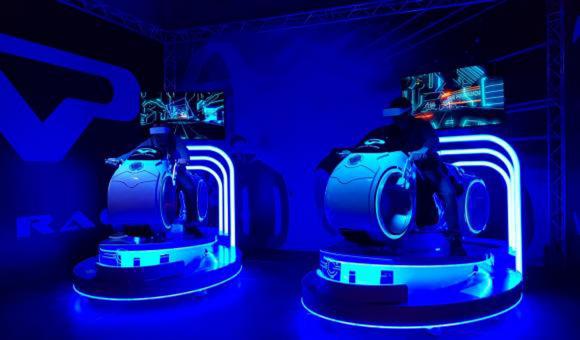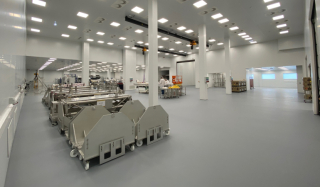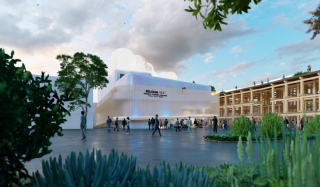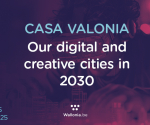
Virtual reality (or VR) needs space. To set up a room-scale virtual reality at home, you ideally need at least 3 square metres – so that you can move or even walk during the experience without walking out on the immersion. The more space you have, the better the immersion, the stronger the experience, the greater the fun. But would hundreds of square metres really mean hundreds of times the fun? Jean-Louis and Frédéric Verbaert decided to find the answer, and built a virtual reality park taking up 4,000 square metres. Mouscron, a city in Hainaut between the Belgian-French border and the Wallonia-Flanders border, has thus become home to Europe’s largest virtual reality site.
For the Verbaert brothers this is a continuation of their previous business venture in Tournai, Virtual Cabs. Except now, instead of four cabins with 15 square metres of virtual reality, the entrepreneurs invite you to experience something that would be absolutely impossible to recreate at home. “It’s a real 2.0 VR wireless immersion,” says Frédéric. “You can move, feel and touch everything on your own. A huge difference compared to a home VR experience.”
The Virtual Park project was supported by the intercommunal association IEG and by Wapinvest. In total it hosts seven activities. Most of them are suitable for visitors over seven years old and built for a multiplayer experience. Sensors ensure that you know exactly where the barriers are and that you ‘see’ all the other players even though you are cut off from the real world by the characteristic headset.
The games let you cooperate and compete. Up to 40 players can fit to The Playground, a smart space of synchronised lighting and sound systems combining interactive games and exercise. Elsewhere, two players can race each other on Tron-like bikes while 14 others can fight in a combat robots arena. And the co-founder’s favourite? “At the moment, our best activity is Arena 42,” says Frédéric. In this full-body tracking experience, two teams of four players compete to conquer Mars. Its 400 square metres definitely give a new meaning to what a room-scale virtual reality game is.
All the activities encourage visitors to stay for the day and enjoy to the fullest a technology that has yet to become mainstream, without the usual space limitations and without the motion sickness linked to seated virtual reality games. “Motion sickness can’t happen at Virtual Park because, in fact, you are moving for real in the space,” explains Frédéric. Additionally, the park prevents long exposure to virtual reality. “To avoid fatigue, our experiences are timed between five and twenty minutes and people have around fifteen minutes of break between the activities.” Visitors can take a pause from virtual reality during augmented reality (AR) experiences, too. These do not require a headset and rather than creating a new virtual world they enhance the real-word environment.
Virtual Park is open six days a week and can host 300 people a day. As the VR technology develops constantly, the Verbaert brothers need to keep up with it. “We are always aware of the news around VR,” Frédéric says. “Furthermore, the structure of our park is not fixed. We have the possibility to progress the same way the VR technology will. Why not dream about a fully immersive experience spanning across all the 4,000 square metres?”
By Tomáš Miklica
Linked articles
Related articles
The set design for the Belgian pavilion in Osaka was created by walloon Dirty Monitor and inspired by Japanese art

EHP, world leader in thermal control systems for the space industry

Sagitta Biotech develops innovative vaccines to fight infectious diseases and cancer




